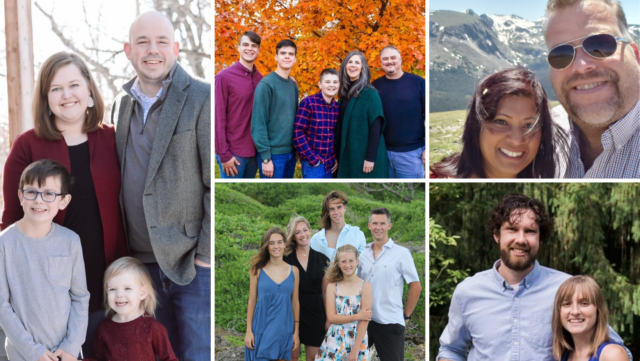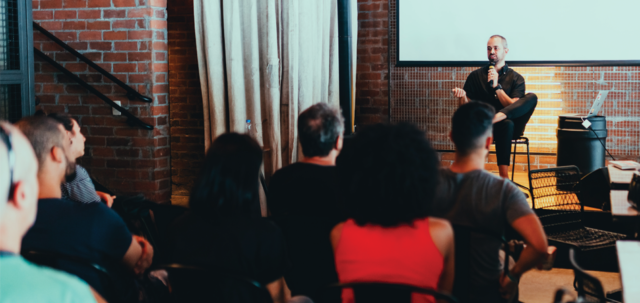
In Revelation 7, John paints a picture of God’s kingdom comprised of every culture, every ethnicity, every linguistic group, every skin color. That’s where we’re headed. But on the way, we often find ourselves fighting the natural tendency to cling to people who are the same as we are.
Building churches that bridge racial, cultural, ethnic, socioeconomic, and ideological divides and truly reflect the diversity of God’s kingdom takes hard work and lots of intentionality. But God didn’t leave us without resources to do so. Here are some ways to get started:
Study Scripture with a multi-ethnic lens.
If you pay attention, Scripture consistently tells the story of God’s kingdom as a multi-ethnic kingdom. So if you’re hoping to foster a richly diverse church, a great place to start is by studying the Bible with an eye to how diversity is discussed, dealt with, and modeled.
For example, you could study diversity in the early church in the book of Acts. Who was coming to know Jesus? How did the disciples navigate the cultural differences and even conflicts that came up?
Ask the Holy Spirit to get involved.
Speaking of Acts, let’s talk about the Holy Spirit’s role in bringing different people groups together. The disciples weren’t necessarily thinking about diversity, but the Holy Spirit empowered them to care about it.
In the Vineyard, consulting the Holy Spirit about everything is part of our DNA—we want to follow the Spirit’s lead for ministry, preaching, worship, how we organize our calendars, everything. So why wouldn’t we ask the Spirit to lead us in becoming more diverse? Try asking, “Holy Spirit, what are you up to in my city in terms of diversity?” And, riskier, ask “Holy Spirit, how are you leading and challenging me to have a more multi-ethnic life?”
Begin to build a multi-ethnic life.
Invite the Holy Spirit to move you toward a more multi-ethnic church, and you can bet that you’ll be challenged to lead a more multi-ethnic life. We all have certain cultural preferences and comfort zones, but we won’t lead anyone to embrace diversity without deliberately moving out of our comfort areas to do it ourselves first.
For people in majority culture or ethnicity, in particular, it’s easy to stay within settings and groups of people who are just like you. Sometimes developing real relationships outside of your culture means you have to deliberately go out of your way to do so. So start by assessing how multi-ethnic your life actually is. How often do you go outside of your cultural preferences and comfort zones to do life? If your answer is “not very much,” look around. What opportunities are there around you to spend time with people who are different? Go out of your way to take those opportunities and spend time with folks from different ethnic, cultural, even different political backgrounds.
Recognize your own ethnicity.
Again, if you are a minority, you have probably had many opportunities to think through what is different or distinct about your background. If not, you may be only vaguely aware of what your own culture and ethnicity are.
Everyone has a perspective and a starting point for understanding the world around them. The more you begin to take note of the uniqueness of your own vantage point, the better you’ll be able to recognize the unique viewpoints of others. Take stock—what values and assumptions have you inherited from your family, upbringing, community, and experiences up to this point?
Ask for outside input.
It’s helpful to realize that you will naturally have some blind spots about the way that you are your church are engaging with people who don’t come from the same background as you or the majority culture of your church. One way to help overcome this, is to ask some folks from different ethnic backgrounds to help you see your life and your church clearly. Ask them how you are doing at accommodating diverse groups of people, and what things might make newcomers feel like outsiders. And of course, be prepared for honest answers, and receive them humbly and graciously!
Be willing to change.
Ultimately, none of this amounts to anything if you aren’t willing to make changes. In Isaiah 11, we see those who are different brought together, and those who were enemies made friends. The wolves, lambs, leopards, goats, calves, and lions go against their habits, preferences, and even nature, to live peacefully together.
Begin to ask yourself, “What has to change in my nature and instincts in order for me to live harmoniously with others?” God can change our nature, but we need to be willing to allow him to do so, and to come into proximity with the ones who we have feared, misunderstood, or even been enemies to.
Break it down.
All this could be overwhelming, but like with anything else, learning to live multi-ethnically in our churches and personal lives is a process. So ask yourself, and ask God, “what could I do this week to foster greater diversity in my life?” And then start to think through the next month, and the next six months. Break it down into manageable segments, and start small. God loves to make much out of little, so don’t be discouraged—just start somewhere, make some goals, and let him do the rest.
What are your tips for fostering a healthy church? For more on this, check out the recording of our webinar on this topic—it’s chock full of insight and handy info for the pastor who’s interested in cultivating diversity.
If you’re interested in more conversation about the multiethnic church, register for the upcoming diversity conference, Better Together: Race, Reconciliation, and The Multiethnic Church, in Evanston Vineyard in Evanston, IL happening November 15-17. Registration cost is $85 per person.
Register for the Vineyard National Ethnic Diversity Conference





